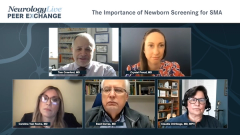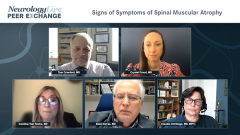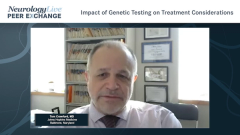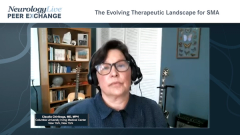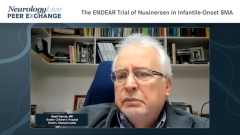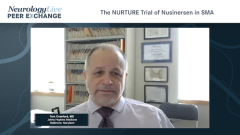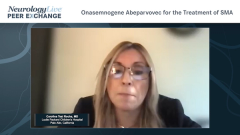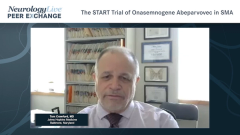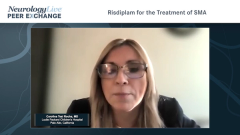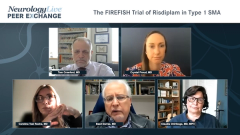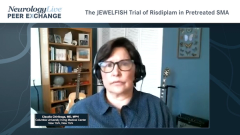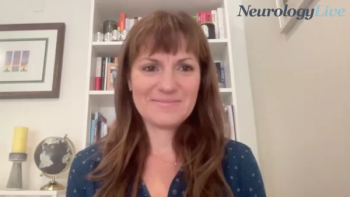
The STR1VE Trial of Onasemnogene Abeparvovec in SMA
Basil Darras, MD provides an overview of safety and efficacy data from the phase 3 STR1VE clinical trial of onasemnogene abeparvovec in patients with symptomatic SMA up to 6 months of age.
Episodes in this series

Crystal Pound, MD: Basil, why don’t you walk us through the STR1VE phase 3 clinical trial data and talk a little about your experience with treating symptomatic children?
Basil Darras, MD: Sure, I’d be happy to. Thank you. As Tom said, these trials were focused on patients under the age of 6 months. The difference between the ENDEAR trial and the STR1VE trial is that, in the STR1VE trial, they also allowed babies to be enrolled who have 1 copy of SMN2—that was, they could have either 1 or 2 copies of SMN2. It was a single infusion, as everybody knows. The coprimary efficacy end points were independent sitting, sitting without support for 30 or more seconds at the age of 18 months, and survival—event-free survival, with avoidance of death, or ventilation for more than 16 hours a day. They also had another end point, which was the ability to thrive. This was a composite 1 that included the ability to swallow, get enough nutritional support, and maintain weight—these were the important parameters. Unfortunately, I have to get into some numbers to explain the results.
There were 22 patients who were enrolled in this STR1VE-US study. Of those 22 patients, 13 of them—about 60%—were able to sit for more than 30 seconds at 18 months. The primary end point was met. In the case of event-free survival, 20 or 22 patients were actually free from ventilation at 14 months of age. I would like to remind the audience that, in the PNCR [Pediatric Neuromuscular Clinical Research Network] cohort study, and based on what we know clinically about SMA [spinal muscular atrophy] type 1, babies with type 1 are unable to sit independently at some point. As far as the ability to thrive, about 40% of the babies who enrolled in this trial study were able to sit.
There is also the STRIVE-EU trial, which was started a little later in the European Union. There are some results from that. About two-thirds of the babies enrolled in the STRIVE-EU trial have achieved the ability to acquire milestones, including the ability to sit independently. Two-thirds of them were free from needing feeding support, an important indicator of stabilization and halting disease progression. These were patients who had a more severe phenotype compared with the previous studies. It seems that the results have been good, and this case led to the approval of gene therapy in May 2019. There have been patients who have been treated commercially since then with Zolgensma [onasemnogene abeparvovec]. More than 600 patients are being treated. The numbers are not huge when compared with nusinersen, but we have so far acquired enough experience using commercial Zolgensma [onasemnogene abeparvovec] in patients who were treated for the first time. Many newborns were diagnosed and treated because the families decided to use it in gene therapy. We had patients who were treated after receiving Spinraza [nusinersen]. The clinical experience postapproval shows that liver transaminitis or liver injury can happen.
We do not know all the parameters, but based on what I have seen so far, it is possible that—for the babies who are heavier or close to 24 months—we have noticed that some of these kids develop transaminitis, but we never had a patient who developed a reversible liver injury. We had a few patients who developed this despite receiving prednisone—1 mg per day, who require high doses of prednisone—who had to go up to 1.5 mg/kg, per day, and about 2 mg/kg per day. Two or 3 of them had been admitted into the hospital to receive intravenous methylprednisolone, and then the transaminitis came down. It seems to be a manageable adverse effect most of the time. You may be aware that there were 2 deaths in Europe related to thrombotic microangiopathy, which presents with anemia thrombocytopenia and kidney failure. In fact, this has been published.
We have to be more careful in terms of monitoring for thrombocytopenia. We are always interested—almost always after a week, as Carolina said—in monitoring a week after treatment but we may have to be careful and monitor this parameter a little more carefully, at least in the beginning. There are adverse effects, but so far it seems that they are manageable with some exceptions. That is what I can say about the use of onasemnogene.
Crystal Pound, MD: Thank you for watching this Neurology Live® Peer Exchange. If you enjoyed the content, please subscribe to our e-newsletters to receive upcoming Peer Exchanges and other great content right in your inbox.
Transcript Edited for Clarity
Newsletter
Keep your finger on the pulse of neurology—subscribe to NeurologyLive for expert interviews, new data, and breakthrough treatment updates.

